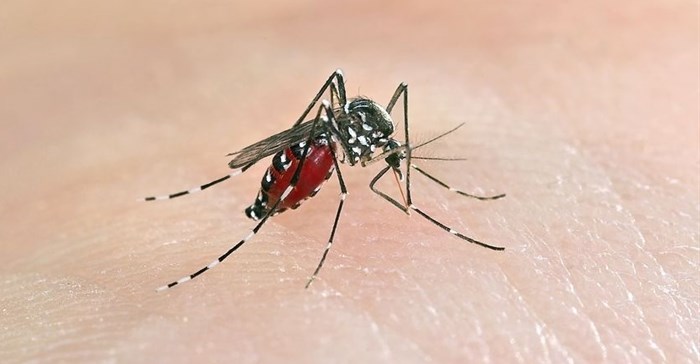
Top stories






More news












Now, after scouring the gene expression of hundreds of patients infected with dengue virus — a mosquito-borne virus that can cause fever and joint pain, among other symptoms — scientists at the Stanford University School of Medicine have found a set of 20 genes that predicts who is at the highest risk of progressing to a severe form of the illness.
Every year, between 200-million and 400-million people in tropical and subtropical regions of the world contract dengue fever, and about 500,000 of those cases are fatal. For the most part, people with the disease recover after receiving some fluids and a few days’ rest, said Purvesh Khatri, associate professor of medicine and of biomedical data science. “But there’s a smaller subset of patients who get severe dengue, and right now we don’t know how to tell the difference.”
Anywhere from 5-20% of dengue cases will advance to severe. Currently, the standard of care boils down to watching and waiting: To diagnose severe dengue, doctors wait to observe specific symptoms and results of laboratory tests that typically emerge in the late stages of the disease. “These practices are not nearly sensitive or accurate enough, and some patients end up admitted to the hospital unnecessarily, while others are discharged prematurely,” said Shirit Einav, associate professor of medicine and of microbiology and immunology.
Using their newly identified set of genes as a foundation, Einav and Khatri aim to identify predictive biomarkers that can help doctors reliably gauge the likelihood of severe dengue in patients who are newly symptomatic and use that information to provide more accurate care to help guide therapeutic clinical studies and, in the future, to guide treatment decisions.
Adept at sleuthing out new findings from old data, Khatri used five previously published papers, which reported information on about 450 individuals collectively, to identify the severe-dengue gene set. Each study catalogued groups of dengue patients, tracking the “transcriptome,” or record of gene expression, at the onset of symptoms for each case.
“The papers had data on dengue patients from multiple countries. We looked at the data and asked, ‘Irrespective of the patient’s genetic background, age and the genetics of the dengue virus itself — different regions have different forms of dengue — what is the molecular response that always shows up when you have a dengue infection?’” Khatri said. “But we weren’t comparing healthy versus infected patients; we compared those who had an uncomplicated dengue infection with those who developed severe dengue.”
In analysing data from the five studies, Khatri and Einav identified 20 genes that stood out. In all of the patients who developed severe dengue, these genes showed a specific expression pattern, or signature: Seventeen were underexpressed, whereas three were overactive. But predicting severe dengue is more complex than whether patients expressed this pattern; there’s variability. Some of the genes were down-regulated to a greater extent in some patients, and less so in others; likewise, there was variability in the degree of overactivity in the overexpressed genes.
“This prediction method is more of a continuum than a binary,” Khatri said. To make sense of the continuum, the researchers developed a score that accounted for this gene-expression variability, essentially evaluating the patients’ risk for severe dengue based on dips and peaks of expression in these 20 genes. The higher the score, the higher the risk of severe dengue.
Then they tested their dengue-prediction method on data from three separate, previously published cohorts of dengue patients, whose transcriptome data was public, and found that the 20-gene set predicted 100 percent of the patients who developed severe dengue. Among those predicted to come down with severe dengue, 78 percent did.
Next, the researchers wanted to see if their predictive measure would succeed in a real-world patient population. So in partnership with the Clinical Research Centre of the Valle del Lili Foundation, in Colombia, they set up a prospective cohort of 34 participants with dengue to assess the efficacy of the predictive gene markers. Each of participants’ transcriptome information, which came from a simple blood draw, yielded a predictive score based on the 20-gene set, and again, Einav and Khatri saw the same levels of accuracy in their test: The test predicted the participants with severe dengue, and there were only a few patients predicted to develop severe dengue who did not.
“Of course, these population samples are small, and we want to confirm our findings in larger cohorts,” Khatri said. The researchers plan to conduct larger trials as they aim to bring the evaluation into clinical use. They’re already expanding trials into Paraguay.
There’s no perfect test, but we’re encouraged by these numbers.
“With a larger cohort, there’s also an opportunity to refine the signature; we could potentially bring down the number of genes,” Einav said. “There’s no perfect test, but we’re encouraged by these numbers, and this is already performing better than the current standard of care.”
It’s likewise possible that the genes could serve as a basis for a targeted therapy for dengue, Einav said — but that’s far on the horizon. For now, the researchers are starting to pursue the mechanisms behind these 20 genes, trying to understand why they seem to foretell the fate of dengue patients.